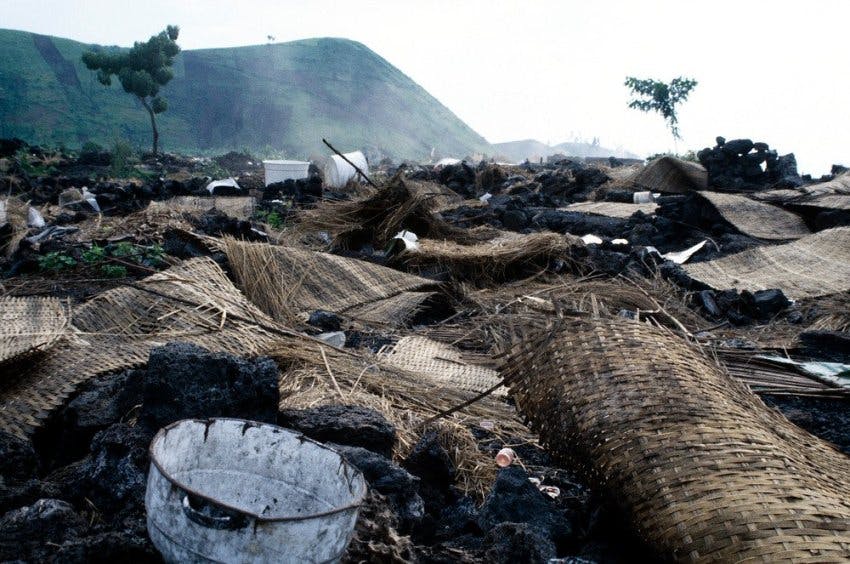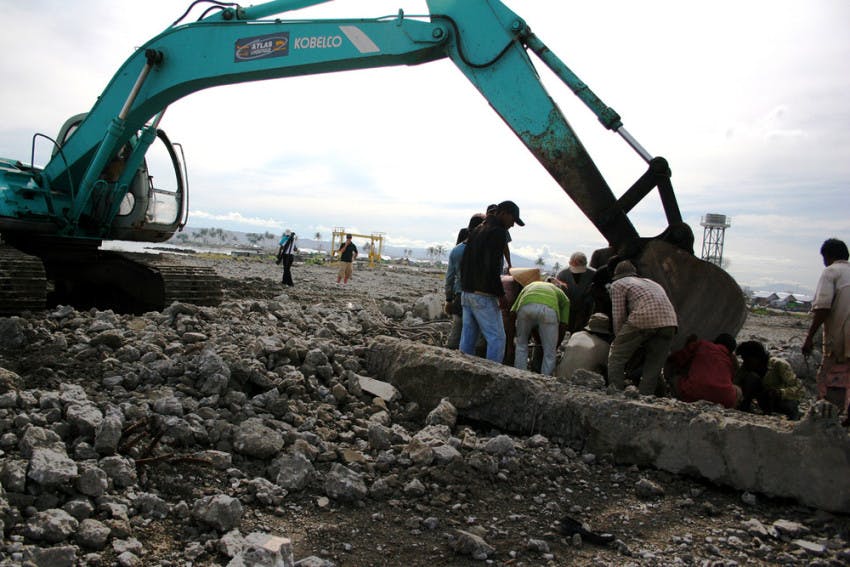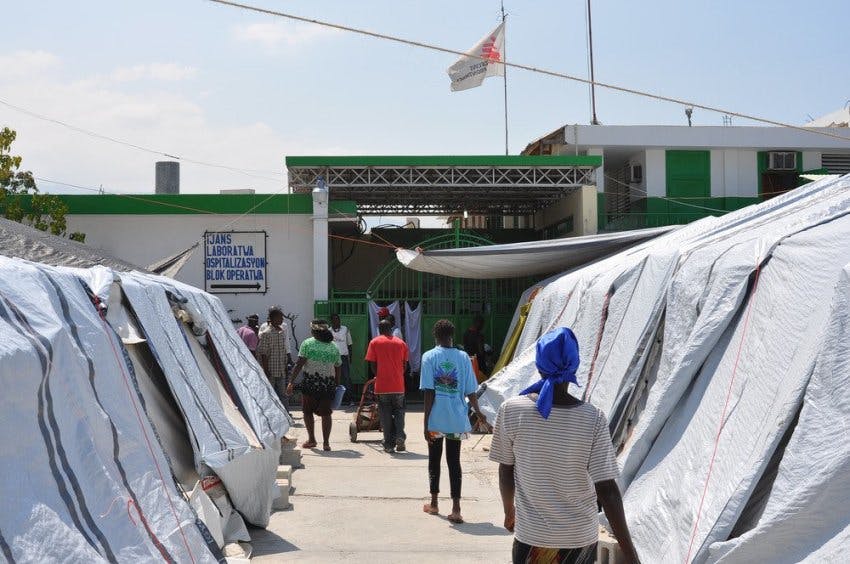1996, Rwanda aftermath: Poor coordination and lack of accountability
Poor coordination and ineffectiveness characterise the humanitarian response in the aftermath of the Rwanda genocide. The Joint Evaluation of Emergency Assistance to Rwanda (JEEAR), the first major humanitarian evaluation of its kind, concludes that accountability is an essential part of a quality humanitarian response, and that current mechanisms for ensuring NGOs adhere to certain professional standards are inadequate.

1997-2003: Flurry of accountability activity
Mary Anderson, an American economist and aid researcher, adopts the phrase “Do No Harm” in an acknowledgement that aid can do more harm than good – especially after the consequences of misallocated aid to Rwandans. The term becomes a “moral compass” for humanitarians.
The Rwanda evaluation kickstarts a drive towards a more professional humanitarian workforce and improved accountability to people affected by crisis. Several initiatives emerge: the Active Learning Network for Accountability and Performance (ALNAP) to support learning and accountability in the sector; the first Sphere handbook, outlining technical standards to which organisations should adhere (one of which is including the participation of recipients of aid); the principles of Good Humanitarian Donorship, which request organisations involve “beneficiaries in the design, implementation and evaluation of humanitarian assistance”.
The JEEAR recommends an independent humanitarian ombudsman, which never takes off, but discussions lead to the Humanitarian Accountability Partnership International (HAP-I) – an international self-regulatory body that translates some of the sector’s accountability concepts into an industry standard.
2004, Indian Ocean tsunami: Aid brands over quality aid
The Tsunami Evaluation Coalition (TEC), another system-wide evaluation of humanitarian performance to the Indian Ocean tsunami which claimed more than 200,000 lives across 14 countries, finds international responders fail to provide transparent and accurate information to affected communities, slowing the recovery process. The response is later referred to as a “humanitarian showcase”, with agencies focused too much on promoting their brand and too little on responding to the needs of affected people.

2005, UN: Accountability a main pillar of humanitarian reform
A series of humanitarian reforms are initiated to improve predictability, accountability, and partnership within the aid system. More than 100 countries sign a declaration that identifies mutual accountability – from provider to recipient and vice versa – as a core principle for improving aid effectiveness.
From the Archives:
Making relief aid count (May 2007)
2010, Haiti earthquake: Poor communication and an information void
In the aftermath of the earthquake, which killed over 200,000 people and garnered billions of dollars of humanitarian assistance, the Communication with Disaster Affected Communities (CDAC) network – a group of humanitarian and media development organisations established the year before – finds gaps in humanitarians’ approach to sharing information, listening to survivors, and responding to their complaints. Others note that with the spread of communication technology, communities now demand better interaction with those providing assistance.

2011 - 2013: Critical mass of accountability activity
Although a “critical mass“ of activity around accountability exists, and the concept has “infiltrated the thinking and approaches of all stakeholders”, a number of factors (the need for quick responses; a lack of incentives, funding, and security; and lack of capacity) hinder consistent application. While some donors offer grant flexibility, agencies still struggle to adjust their programmes as a result of the feedback from affected communities.
A major humanitarian aid reform process – the Transformative Agenda – puts accountability at the forefront once again, but later reviews indicate that it ultimately leads to little or no change in practice.
Time to Listen – a book capturing the experiences of thousands of people on the receiving end of aid – is published. While they say the assistance is appreciated, they also say a “new international aid paradigm” is needed – one that shifts from delivering things to a model that supports collaborative planning with local actors.
Meanwhile, organisations like Ground Truth Solutions spring up to track perception data of affected people and bring it to the attention of humanitarian decision-makers. Their work tells a consistent message: Feedback and data are useless if not used by individual agencies and policy-makers to enact change.
From the Archives:
How to put accountability into practice (July 2012)
Accountability - what’s in a word? (July 2012)
Accountability in action (July 2012)
2014 - 2016: A participation revolution?
People in Aid, an organisation established in 1995 to improve management of aid professionals, and the Humanitarian Accountability Partnership International (HAP-I) merge to become the CHS Alliance, promoting a common standard to put people affected by crisis at the centre of humanitarian work. In 2015, the Humanitarian Quality Assurance Initiative is set up to provide independent audits of compliance to the CHS benchmarks.
In the lead-up to the first-ever World Humanitarian Summit, community consultations show that although almost all Syrian refugees in Jordan have received UN support, only a third have found it helpful. Meanwhile, in Ukraine, half of those surveyed indicate they didn’t receive support because they didn’t know it was available.
The “Participation Revolution” is born as one of the core themes of the Grand Bargain, a set of commitments made between aid donors and organisations emerging from the summit. Like others before it, these accountability reforms are soon found to be more of a “technocratic adjustment than a genuine upending of the status quo”, and community-led responses are far from the norm.
Report calls on aid agencies to listen to, work with, beneficiaries (January 2013)
Setting standards for the aid industry (June 2013)
Accountability after Haiyan (January 2015)
2018: Ticking the box, but little actual change
The State of the Humanitarian System report, a biennial review of humanitarian progress, finds limited improvement when it comes to participation and accountability. Feedback mechanisms may be in place, but they are perceived as “box-ticking exercises” rather than as influencing humanitarian decision-making and planning. Surveys, however, reveal a higher level of satisfaction among aid recipients with the quality, quantity, and relevance of the aid they have received compared to 2012.
Sexual abuse and exploitation scandals within the aid sector further highlight poor accountability, as there are few ways to redress grievances or impose sanctions within the system.
2020: Coronavirus, lessons on communication
Public health messaging around the pandemic reiterates the importance of communicating and engaging with affected people, bringing back reminders of the 2013-2016 West Africa Ebola crisis when inappropriate communication hindered efforts to contain the epidemic.
The same factors that undermine accountability endure – including a shared understanding of what it entails, leadership buy-in, and dedicated funding. Some argue that accountability and participation will never happen by focusing solely on the mechanistic elements, without a true transfer of power to those affected.